Glorious goldenrod, the bright star of the autumn landscape, is often falsely accused of causing fall allergies. The more likely culprit is ragweed, which blooms at the same time. Goldenrod pollen is sticky and heavy, not windborne, so it isn’t likely to make you sneeze. Ragweed, on the other hand, is a menace!

Goldenrod is so important for pollinators that it is often called a “keystone” plant – its absence would cause numerous other species to disappear. Not only is it a rich source of late-season nectar, but there are over 20 species of native bees that can only eat the pollen of goldenrod. Without goldenrod, whole species of bees would become extinct!
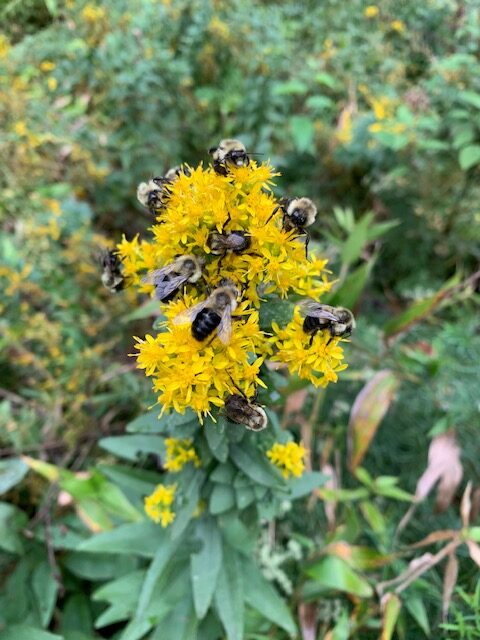
And goldenrod is a wonderful garden plant, just coming into bloom in late September as most flowering plants start to fade. You can find goldenrod ‘Fireworks’ (Solidago rugosa ‘Fireworks’) at most local nurseries. It is a well-behaved, clump-forming perennial that truly earns its name: bursts of tiny yellow flowers shoot out in every direction, attracting pollinators of all types.

Another great garden plant is ‘Golden Fleece’ (Solidago sphacelata ‘Golden Fleece’). Unlike most goldenrods that can reach a height 3 feet or more, ‘Golden Fleece’ is compact, staying under 18 inches and spreading slowly to 2 feet wide, making it a great front-of-the border choice. We use it as an edger along the path in our new Pollinator Garden.
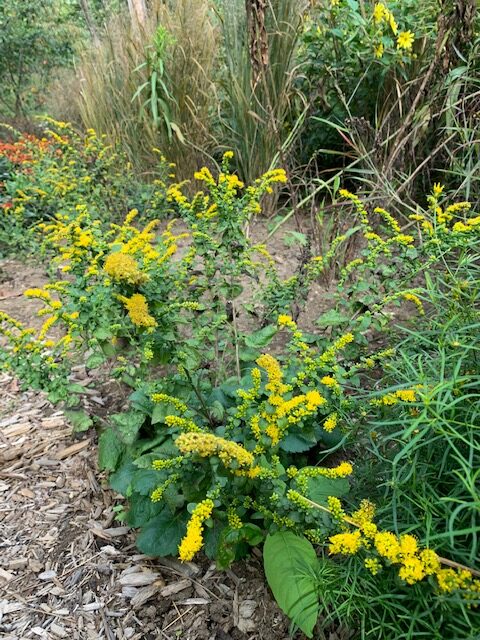
Both varieties, like most other goldenrods, are deer resistant, drought tolerant, and prefer full sun and well-drained soil. Look for ‘Fireworks’ at the Nature Center right at the entrance to the Meadow. You’ll see ‘Golden Fleece’ lining both sides of the path through the Pollinator Garden. Many other varieties of goldenrod pop up naturally in the Meadow and in the woods where you will find them bringing that amazing sunshine color into our fall landscape.

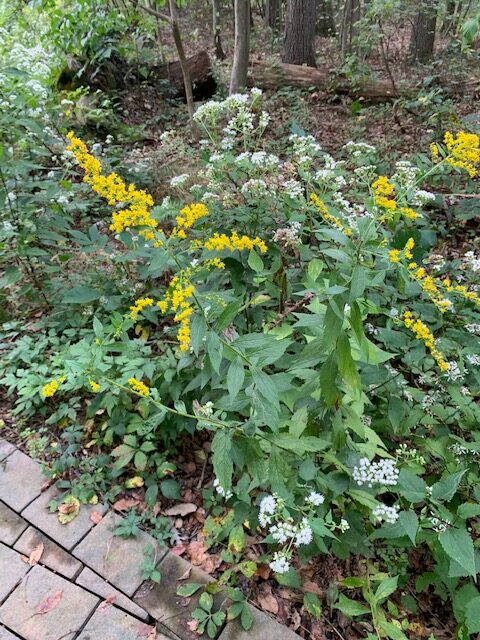
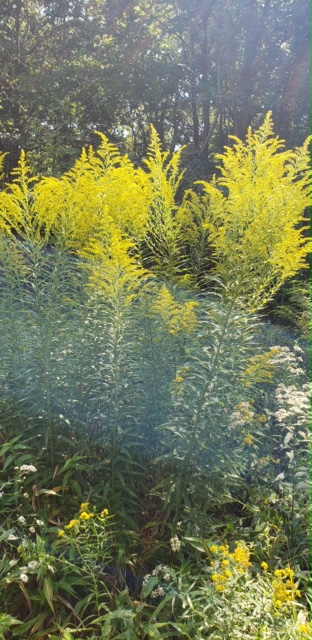
This blog is authored weekly by Cathy Ludden, local expert and advocate for native plants and Board Member, Greenburgh Nature Center.

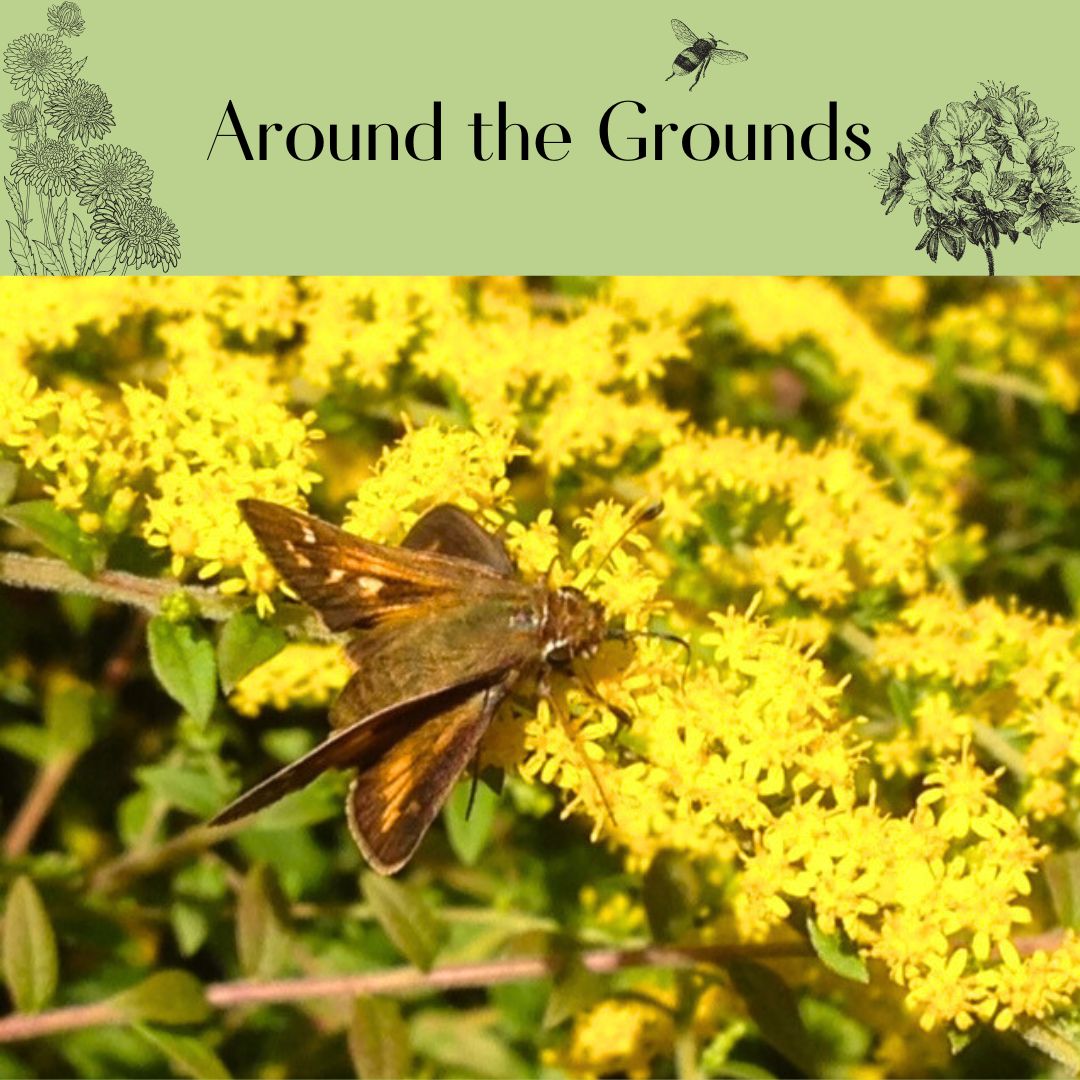
According to the National Wildlife Federation and research supported by Doug Tallamy, goldenrod is the host plant for 138 species of moths and butterflies. That means goldenrod supports caterpillars that are essential food for baby birds. Goldenrod is busy in the ecosystem all summer — long before it blooms.
I’ve never seen “Fireworks” before! Is it as hardy as zone 4? It’s spectacular! I’ll look for it next spring.
Yes, Fireworks (Solidago rugosa) is hardy in zones 7 through 4! It wants full sun and average moisture, but is pretty drought tolerant and happy in poor soil. I’ve seen it recommended for rain gardens, but at the Nature Center it’s been going strong for 6 years with no irrigation at all at the edge of our Meadow. It will spread both by seed and rhizomes, but not nearly as aggressively as other goldenrod species. Fabulous plant!
Good to read important information, and to see the lovely photos!